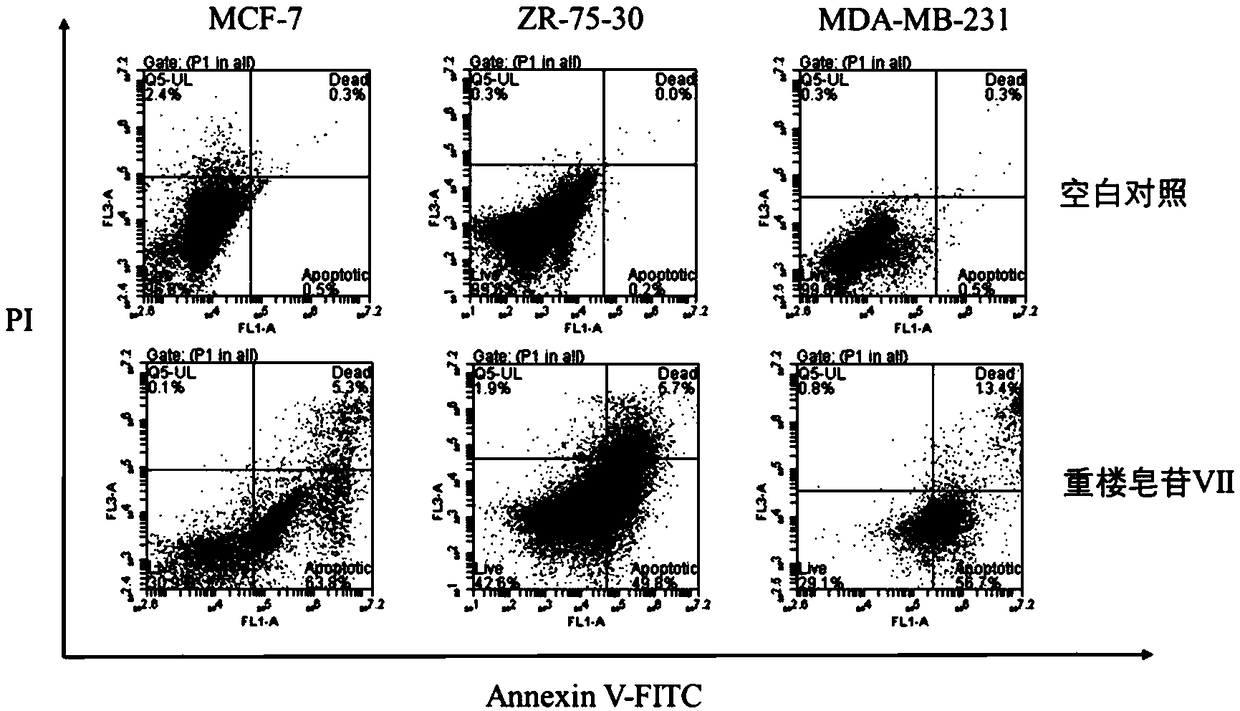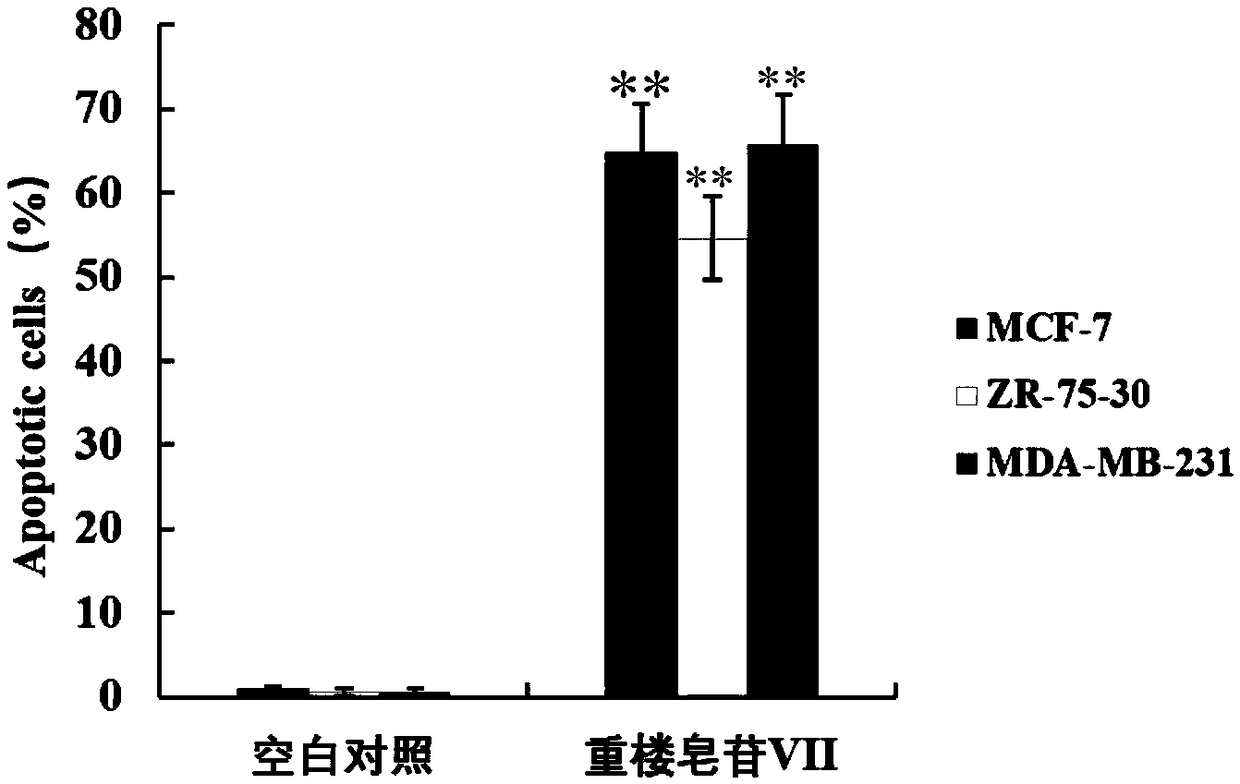New application of Parissaponin VII
A new application technology of papaya saponin, which is applied in the new application field of papaya saponin VII, can solve the problems that papaya papaya saponin VII has not been reported, and achieve the effect of high anti-breast cancer activity, clear effect and good inhibitory effect
- Summary
- Abstract
- Description
- Claims
- Application Information
AI Technical Summary
Problems solved by technology
Method used
Image
Examples
Embodiment 1
[0019] Inhibitory effect of saponin VII on breast cancer cells in vitro
[0020] 1. Experimental method
[0021] Human breast cancer cells MCF-7, ZR-75-30, and MDA-MB-231 were grown in MEM medium and RPMI-1640 medium containing 10% fetal bovine serum, 100U / mL penicillin, 100μg / mL streptomycin, respectively , L-15 medium, placed in 5% CO 2 , cultured in a 37°C incubator.
[0022] Take the cells in the logarithmic growth phase and make 5×10 4 cells / ml concentration of cell suspension, 100 μL per well was inoculated in a 96-well plate and cultured for 24 hours. After the cells were fully adhered to the wall, the original medium was discarded, and different concentration gradients of papaya saponin VII prepared from the medium were added. , 100 μL per well. Incubate at 37°C for 24, 48, and 72 hours respectively. After the end of the culture, add 10 μL of 5 mg / mL MTT to each well and continue to culture for 4 hours. Discard the supernatant, add 150 μL of DMSO to each well, and ...
Embodiment 2
[0029] Pauline saponin VII induces apoptosis of breast cancer cells
[0030] 1. Experimental method
[0031] MCF-7, ZR-75-30, MDA-MB-231 cells in the logarithmic growth phase were collected, digested with 0.25% trypsin without EDTA, seeded in 6-well plates, and adjusted the number of cells to 1.0×10 per well 5 After culturing for 24 hours, the culture medium was discarded, and the cells were treated with saponin VII (concentrations of 12, 10, and 36 μmol / L, respectively) for 24 hours. At the same time, the Annexin V-FITC and PI single-stained wells of 0h were set as controls. After 24 hours, transfer the cell supernatant to a 15ml centrifuge tube, wash twice with PBS, add EDTA-free trypsin to digest the cells, then transfer to a centrifuge tube, add medium to stop digestion, centrifuge at 500×g for 5 minutes, remove The supernatant was drained upside down on filter paper. The cells were resuspended in 1 mL of PBS and transferred to a 1.5 mL EP tube, and then centrifuged at ...
Embodiment 3
[0035] In vivo anti-breast cancer xenograft tumor experiment of Patricia saponin VII
[0036] 1. Experimental method
[0037] Take BALB / c mice, raise the animals in separate cages, and start the experiment after 3 days of adaptation to the environment. Take the mouse 4T1 breast cancer cells in the logarithmic growth phase, digest with trypsin, centrifuge, remove the supernatant, count, and adjust the cell concentration to 2×10 with normal saline 7 Cells / ml, the cells were inoculated subcutaneously in the axilla of the right forelimb of the mouse, 0.1ml / mouse, and recorded as the first day of inoculation. Record the long diameter (a), short diameter (b) and body weight of the transplanted tumor every 2 days, and calculate the tumor volume (V) according to the following formula, V=a×b 2 / 2. When the tumor grows to 100mm 3 At the same time, the animals were randomly divided into 4 groups, 6 in each group: (1) blank control group: intraperitoneal injection of normal saline, 0....
PUM
 Login to View More
Login to View More Abstract
Description
Claims
Application Information
 Login to View More
Login to View More - R&D
- Intellectual Property
- Life Sciences
- Materials
- Tech Scout
- Unparalleled Data Quality
- Higher Quality Content
- 60% Fewer Hallucinations
Browse by: Latest US Patents, China's latest patents, Technical Efficacy Thesaurus, Application Domain, Technology Topic, Popular Technical Reports.
© 2025 PatSnap. All rights reserved.Legal|Privacy policy|Modern Slavery Act Transparency Statement|Sitemap|About US| Contact US: help@patsnap.com



